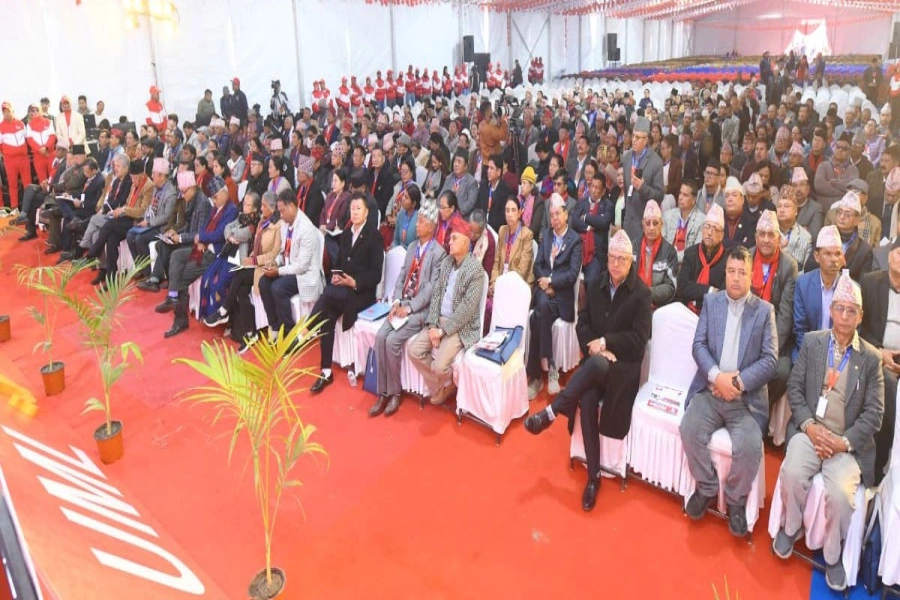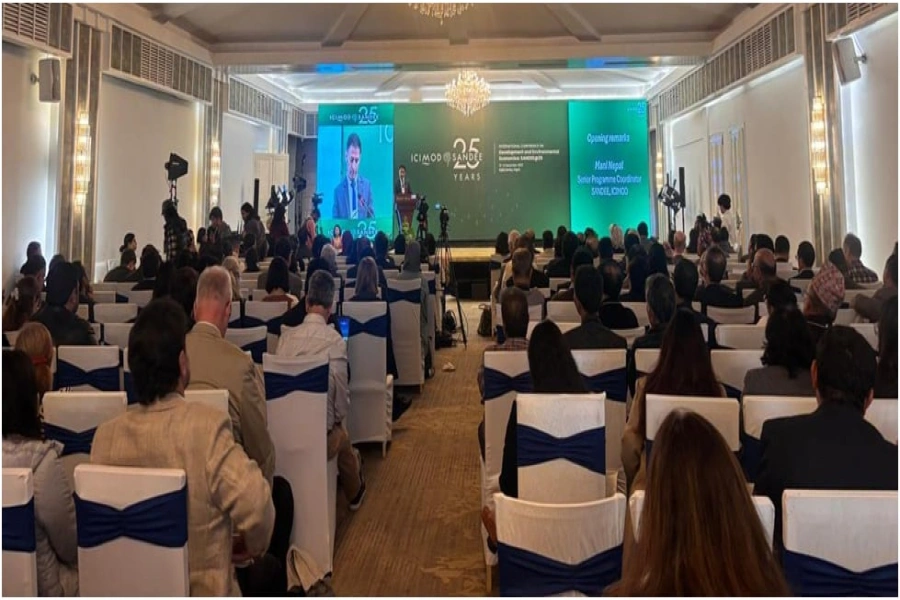In our increasingly interconnected world, where digital technology permeates every aspect of our daily lives, it's undeniable that it has revolutionized the way we function, making tasks easier and becoming an indispensable part of personal and professional growth. However, while many have embraced and benefited from this technological advancement, certain groups, particularly individuals with disabilities in developing countries like Nepal, continue to face significant barriers in accessing and utilizing these digital platforms. This creates a glaring disparity in opportunities for personal empowerment and socio-economic advancement.
To shed light on this critical issue and underscore the importance of digital literacy and the effectiveness of assistive technology applications for persons with disabilities, I will be turning to the insights gleaned from the digital sensitization training conducted by Prayatna Nepal. As an organization dedicated to empowering women with disabilities, their experiences and expertise provide insights into the challenges faced and the potential of bridging the digital divide. In this exploration, I focus on the intersection of technology, accessibility, and empowerment, aiming to advocate for inclusive digital ecosystems that leave no one behind.
Despite various training programs organized in Kathmandu Valley, there remains a significant gap in decentralized awareness efforts, which fail to reach individuals across different regions of Nepal. Recognizing this discrepancy and the pressing need for broader accessibility, a recent training initiative was conducted in the Gandaki Province. This program aimed to equip visually impaired women with the skills to navigate digital platforms confidently, utilizing assistive devices effectively to enhance various aspects of their daily lives, including education, independence, and banking.
The training, facilitated by Khom Raj Sharma, a digital accessibility expert, focused on essential concepts such as digital rights and the significance of accessibility. Participants received orientation on a range of assistive technologies and applications tailored to their needs, emphasizing their potential to enhance independence and productivity. Sessions covered topics such as mobile phone accessibility features and practical demonstrations of applications like Insta Reader, designed to facilitate reading for visually impaired individuals. Additionally, the training addressed the importance of e-wallets and mobile banking, highlighting their role in strengthening financial inclusion and autonomy among the participants.
What is Digital Accessibility and Assistive Technology Applications?
Digital accessibility refers to the design and development of digital platforms, software, and content that can be easily accessed and used by individuals with disabilities. It encompasses various technologies and tools aimed at making digital information and services more inclusive and usable for everyone, regardless of their abilities. One crucial aspect of digital accessibility is the utilization of assistive technology applications, which are specifically designed to enhance the accessibility of digital content and functionalities for individuals with disabilities.
Inclusive Election in Nepal

Among the notable assistive technology applications are Envision AI, Seeing AI, Cash Reader, and Be My Eyes. These applications leverage cutting-edge technologies such as artificial intelligence and computer vision to provide innovative solutions for individuals with visual impairments.
Conceptual Clarity:
•Envision AI: Envision AI is an innovative assistive technology application designed to empower individuals with visual impairments. It employs advanced artificial intelligence to recognize and describe visual information in real-time. Users can point their smartphones at objects, text, or scenes, and Envision AI provides auditory feedback, describing the content captured. This application enhances independence by enabling users to navigate their surroundings, read printed materials, and identify objects with greater ease.
•Seeing AI: Seeing AI is a Microsoft-developed application that leverages the capabilities of artificial intelligence to assist individuals with visual impairments. The app offers a range of features, including object recognition, text-to-speech conversion, and even facial recognition. By utilizing the smartphone's camera, Seeing AI provides users with valuable information about their environment, making it a valuable tool for enhancing accessibility and fostering greater independence.
•Cash Reader: Cash Reader is a mobile application specifically designed to address the challenges faced by individuals with visual impairments in handling currency. By utilizing the device's camera, Cash Reader identifies and announces the denomination of banknotes, enabling users to independently manage their finances. This application contributes significantly to financial inclusivity by providing a simple yet effective solution for people with visual disabilities to handle money confidently.
•Be My Eyes: Be My Eyes is a unique assistive technology application that facilitates remote assistance for individuals with visual impairments. Through a live video connection, sighted volunteers offer assistance in various tasks, such as reading labels, identifying objects, or navigating unfamiliar environments. Be My Eyes promotes a sense of community and interdependence, illustrating how technology can connect people and bridge gaps to ensure equal access to information and opportunities.
Importance of Digital Accessibility:
Digital accessibility is of paramount importance for persons with disabilities as it ensures equal opportunities, independence, and inclusion in the digital age. For individuals with visual impairments, accessible digital content and assistive technologies bridge the gap between them and the vast array of information available online. It empowers them to access educational resources, employment opportunities, and social interactions, thereby enhancing their quality of life and ensuring their active participation in society. Moreover, digital accessibility not only benefits those with disabilities but also contributes to a more inclusive and diverse digital environment for all users, promoting equality and social justice in the digital realm. Therefore, prioritizing digital accessibility is not just a matter of compliance with regulations but a fundamental step towards creating a more equitable and inclusive society for everyone.
Reflections
In reflecting upon the recent digital sensitization and literacy training, it becomes evident that participants exhibited a strong willingness to engage with assistive applications and digital platforms for their educational and personal needs. However, a significant barrier emerged in the form of language comprehension, as many tutorials were exclusively available in English. This language barrier hindered participants' ability to fully grasp the guidance provided, underscoring the necessity to cater to linguistic diversity. Thus, it is imperative to design tutorials in both Nepali and English languages to mitigate this obstacle, ensuring accessibility and effective utilization of digital resources for all.
Likewise, it becomes apparent that a singular training session is insufficient to achieve comprehensive digital inclusion. Instead, there is a pressing need to promote ongoing collaborations with various stakeholders to perpetuate such programs and initiatives. By establishing a sustained effort, a continuous chain of digital inclusion can be maintained, reaching a broader audience and ensuring that nobody is left behind in acquiring digital literacy skills.
Moreover, to ensure a supportive learning environment, the establishment of peer mentorship programs is recommended. Pairing individuals who have successfully completed the digital literacy training with those who are new to the program creates a mentor-mentee dynamic. This not only facilitates knowledge transfer but also encourages a sense of community and collaboration, where participants can seek guidance and support from their peers, enhancing the overall learning experience.
Lastly, continuous monitoring and evaluation mechanisms should be integrated into the digital literacy program to assess its effectiveness and identify areas for improvement. Regular feedback sessions, surveys, and performance assessments will provide valuable insights into the impact of the training, allowing for necessary adjustments and refinements.
In summing up, it is evident that the journey towards inclusivity is both profound and challenging. The recent training initiative shed light on the persistent gaps and the potential for positive change. However, in the pursuit of a digitally inclusive society, where no one is left behind, recognizing that the path ahead requires a commitment beyond isolated training sessions. It demands a collective effort, a harmonious collaboration between various stakeholders, and a strong dedication to bridging the linguistic, geographical, and educational divides that persist. In closing, let us ponder on the notion that true progress is measured not just by technological advancements but by the extent to which these innovations create meaningful opportunities for every individual, transcending barriers and ensuring a world where digital empowerment is a universal right, not a privilege.





































